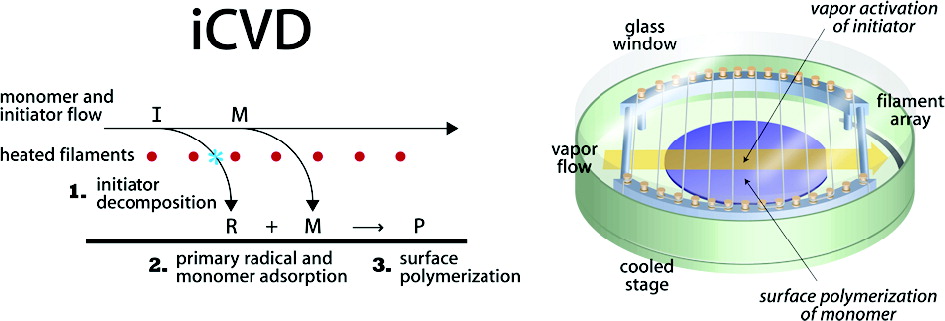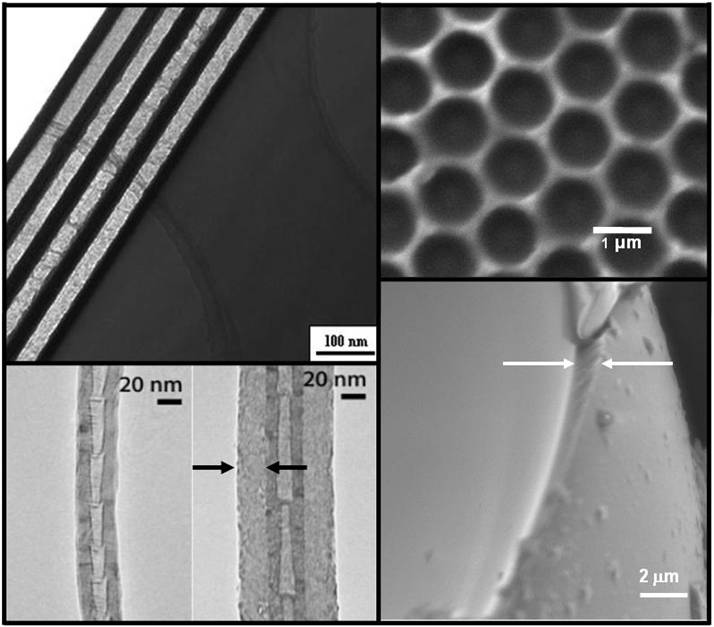iCVD

In Initiated Chemical Vapor Deposition (iCVD), monomer and initiator flow into a vacuum chamber where they contact resistively heated filaments. The initiator breaks down into radicals, beginning a free-radical polymerization of the monomer at the substrate surface. By replicating solution-phase free-radical polymerization in the vapor phase, a wide variety of thin polymer films can be deposited. More than 50 different polymers or copolymers have been deposited via iCVD, including anti-microbial polymers, hydrogels, superhydrophobic polymers, biopassive insulators, alternating copolymers, and click functional polymers.

The inherently conformal nature of CVD allows us to produce a variety of structures. To the right are electron microscope images of a humidty-responsive Bragg mirror (top left), an array of polymer nanobowls produced using colloidal lithography (top right), hydrogel coatings around particles (bottom right), and reactive polymer coatings around carbon nanotubes (bottom left).
We are currently interested in using iCVD to create patterned polymer surfaces, chemical sensors, conformal coatings for nano-scale features, and smart responsive surfaces.


